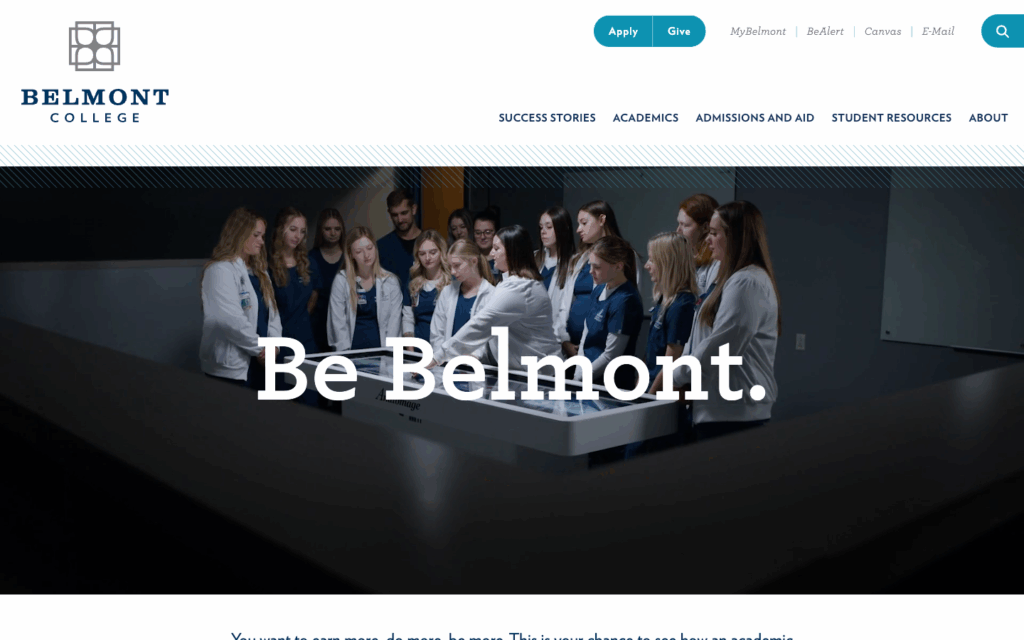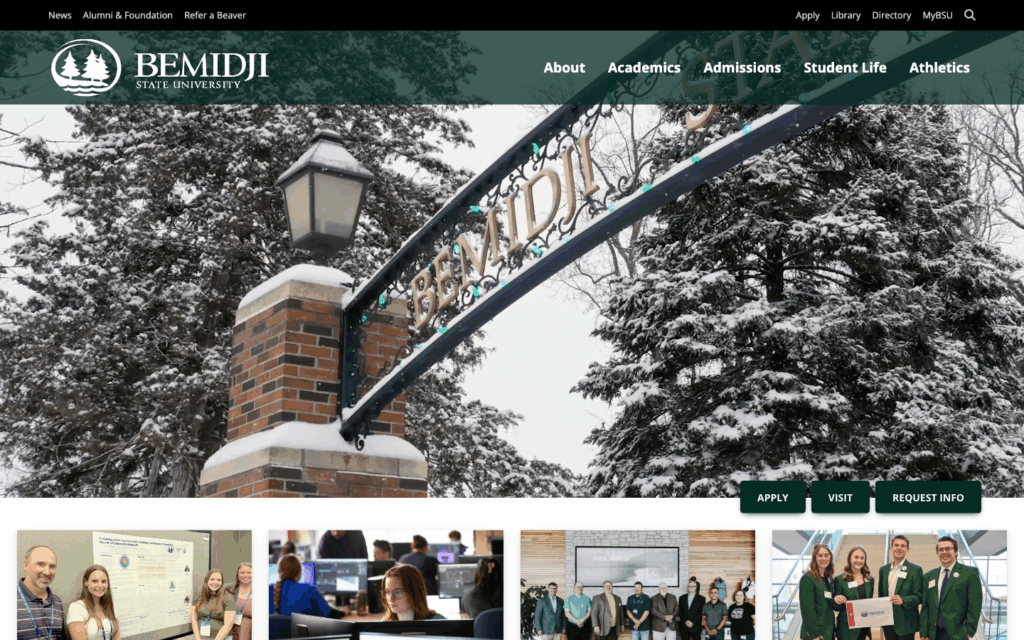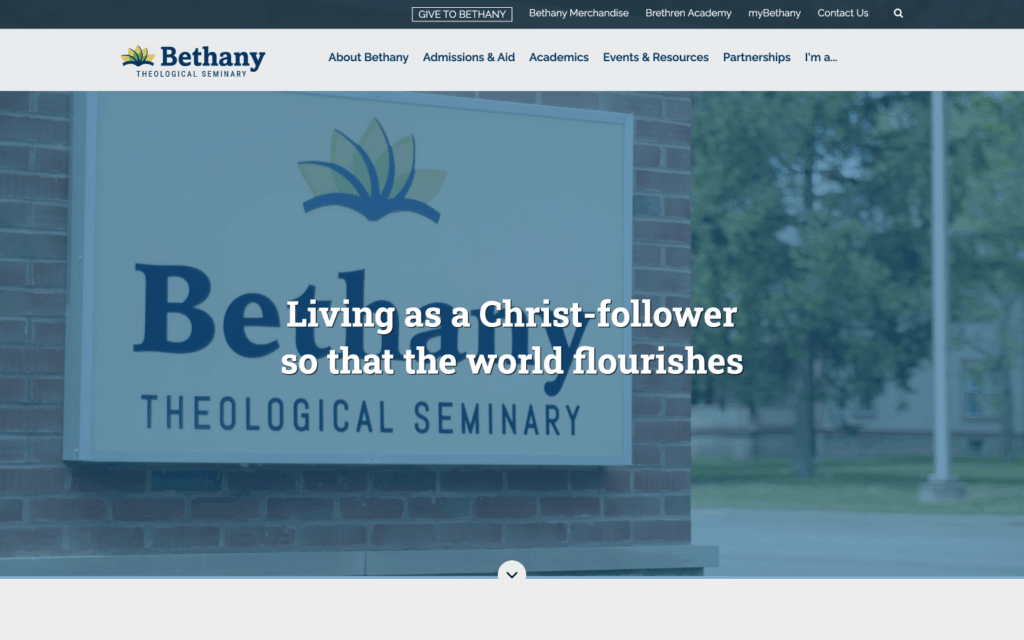FAVBs are the latest design trend for higher education homepages, but what purpose do they serve for course design?
Visit a higher education website. Yes, right now. Pick and choose your local, favorite, or dream institution. Chances are, their website has a singular digital design element front and center alongside its logo, donation links, and rankings – the full-width, auto-playing video background (FAVB).
This video provides a visual flair to what is otherwise a fairly static medium of a organizational homepage website. However, I ask you to really look at what the video is showcasing. It is likely not stock videography or ethereal visual flair from a JavaScript framework. It is a real video production of university experience(s). But, what are we saying? And what does that mean for higher education?
Bleedthrough from website to classroom
Since joining Georgia Tech’s Center for 21st Century Universities, I’ve become fascinated by the bleedthrough of higher-education digital design schemas into educational technology. An institution’s educational software scaffolds typically inherit facets of the overarching brand (digital) image and identity. As that divide between a learning management system and a content management system becomes evermore slippery, I’m interested in what design trends have not made their way into a course digital experience.
And so enters… the FAVB. For many campuses, it’s ubiquitous with a university homepage. Case in point:




These multimedia productions are typically well-invested videos showcasing a wide range of activities and experiences. So much so that I am leading a research project to understand just what higher education is presenting itself as in these video montages.
Do we present ourselves akin to a training montage? A center of excellence?
More importantly, as it pertains to educational course materials – what happens when we can create multimedia akin to this with a minimal cost?
Generative media tools have brought us here, and it’s worth theorizing that future state.
Forecasting course video backgrounds
Fortunately, we’re in the early stages in generative video capabilities where this complementary visual flair in digital course materials just doesn’t pass the sniff test. Rather than being positive visual aesthetics (whether for seductive, complementary, or other purposes), it’s a disjointed and amateurish production. But that’s not to say it will look this way forever. It would be naive to assume that generative video won’t match the same level of detail that generative imagery did.
We should prepare for generative video in the same way we’re exploring generative imagery in the classroom and digital avatar personas in instructional videos.
Much like how university websites (in most cases) evolved to become more corporate – chock full of brand imagery, voice, and tone, so could the digital presence of a course.